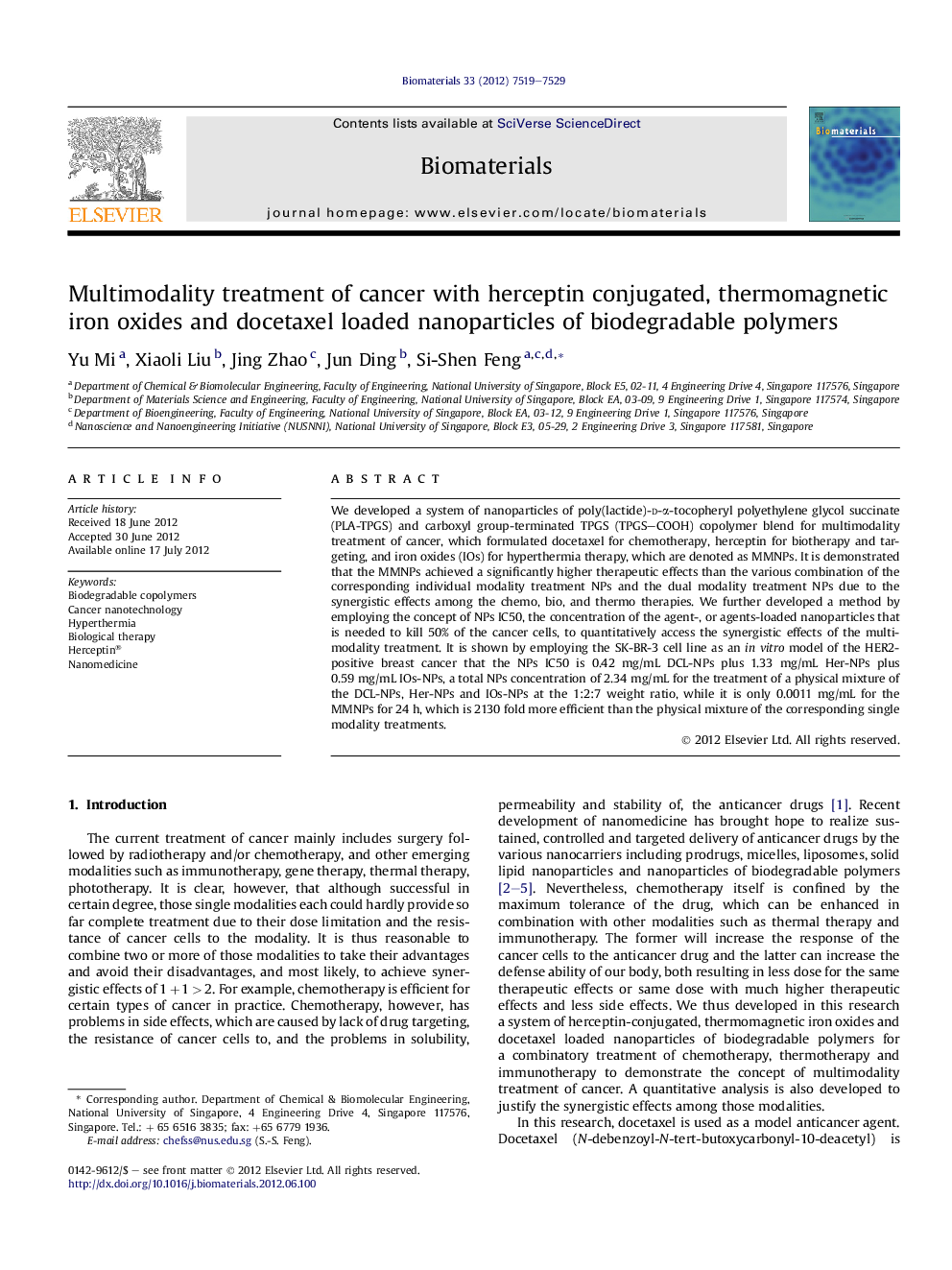| Article ID | Journal | Published Year | Pages | File Type |
|---|---|---|---|---|
| 6658 | Biomaterials | 2012 | 11 Pages |
We developed a system of nanoparticles of poly(lactide)-d-α-tocopheryl polyethylene glycol succinate (PLA-TPGS) and carboxyl group-terminated TPGS (TPGS–COOH) copolymer blend for multimodality treatment of cancer, which formulated docetaxel for chemotherapy, herceptin for biotherapy and targeting, and iron oxides (IOs) for hyperthermia therapy, which are denoted as MMNPs. It is demonstrated that the MMNPs achieved a significantly higher therapeutic effects than the various combination of the corresponding individual modality treatment NPs and the dual modality treatment NPs due to the synergistic effects among the chemo, bio, and thermo therapies. We further developed a method by employing the concept of NPs IC50, the concentration of the agent-, or agents-loaded nanoparticles that is needed to kill 50% of the cancer cells, to quantitatively access the synergistic effects of the multimodality treatment. It is shown by employing the SK-BR-3 cell line as an in vitro model of the HER2-positive breast cancer that the NPs IC50 is 0.42 mg/mL DCL-NPs plus 1.33 mg/mL Her-NPs plus 0.59 mg/mL IOs-NPs, a total NPs concentration of 2.34 mg/mL for the treatment of a physical mixture of the DCL-NPs, Her-NPs and IOs-NPs at the 1:2:7 weight ratio, while it is only 0.0011 mg/mL for the MMNPs for 24 h, which is 2130 fold more efficient than the physical mixture of the corresponding single modality treatments.
